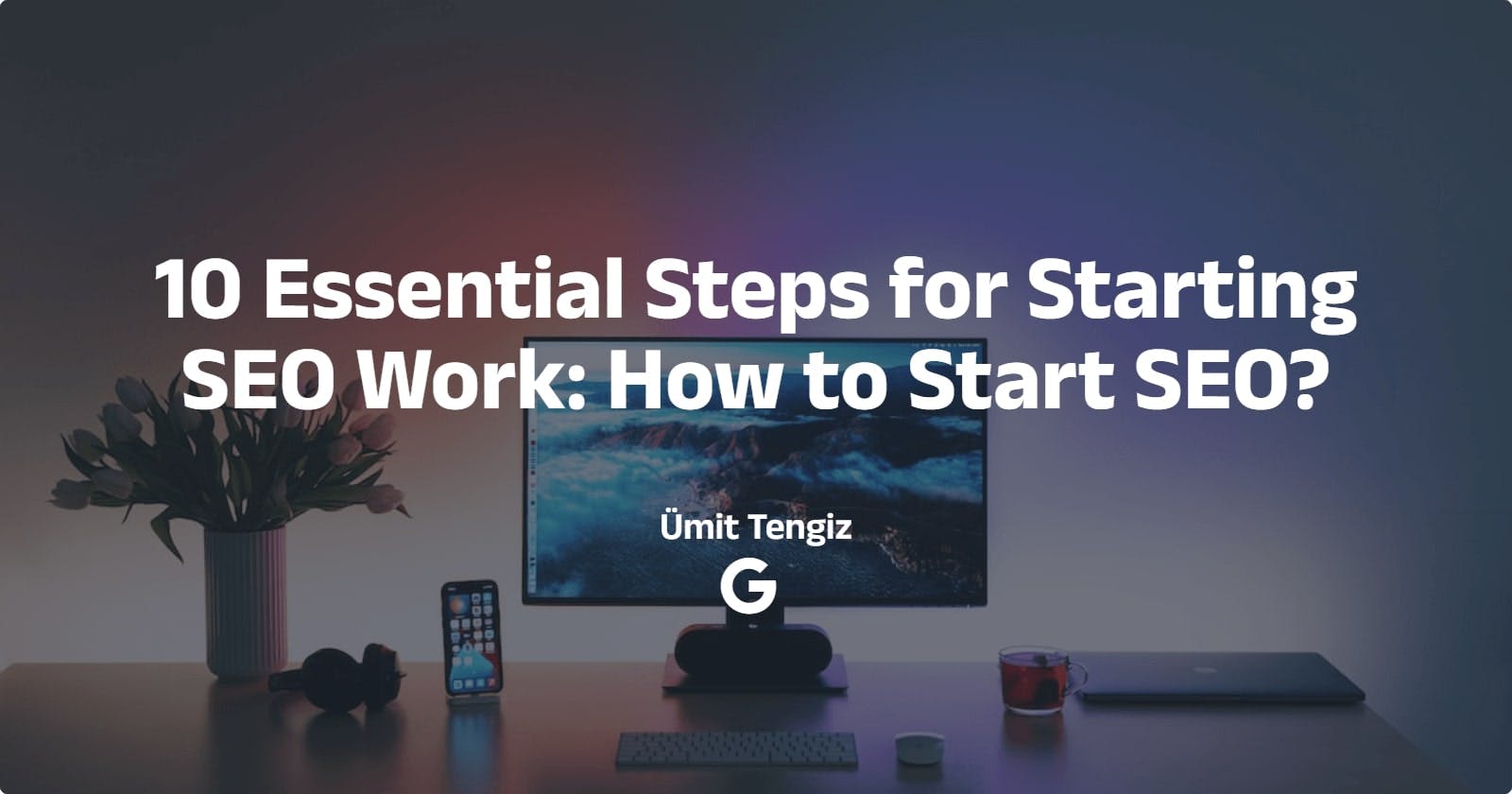Table of contents
- 1. Conduct Keyword Research
- 2. Analyze Competitors
- 3. Conduct a Website Audit
- 4. Develop an On-Page Optimization Strategy
- 5. Develop a Link Building Strategy
- 6. Monitor and Analyze Performance
- 7. Local SEO Optimization
- 8. Social Media Optimization
- 9. Content Marketing
- 10. Continuous Optimization and Improvement
Search Engine Optimization (SEO) is an important digital marketing strategy that helps businesses improve their website's visibility and ranking on search engine results pages (SERPs). Starting SEO work requires careful planning and execution to achieve the desired results. In this process, an SEO expert plays a vital role in implementing various SEO tactics and strategies to improve the organic search performance of a website. Here are 10 essential steps for starting SEO work that can help businesses achieve their SEO goals.
1. Conduct Keyword Research
- Use tools like Google Keyword Planner, SEMrush, Ahrefs, Moz Keyword Explorer, and others to identify relevant and high-traffic keywords.
- Analyze search data to determine the search terms and phrases that users are using to find businesses or services similar to the one being optimized.
- Group keywords into categories based on relevance and search intent.
- Identify long-tail keywords that are less competitive and have higher conversion potential.
- Use keyword research to inform on-page optimization, content creation, and link building strategies.
- Continuously monitor and update keyword research to stay up-to-date with changes in search trends and user behavior.
2. Analyze Competitors
- Identify your main competitors in the industry and analyze their SEO strategies.
- Evaluate their website structure, content, and backlink profile.
- Determine which keywords they are targeting and how they are ranking for them.
- Use this information to identify opportunities for improvement and develop a strategy to outrank them.
3. Conduct a Website Audit
- Conduct a comprehensive audit of the website to identify technical SEO issues, such as broken links, crawl errors, and page speed issues.
- Evaluate the website structure, URL hierarchy, and internal linking to ensure that it is optimized for search engines.
- Analyze the content on each page to ensure that it is high-quality, relevant, and informative.
- Check for duplicate content and ensure that meta tags and descriptions are optimized for search engines.
4. Develop an On-Page Optimization Strategy
- Use keyword research to optimize page titles, meta descriptions, headers, and content for target keywords.
- Ensure that the website is mobile-friendly and has a responsive design.
- Optimize images and videos to improve visibility and page load speed.
- Implement schema markup to improve search engine visibility and click-through rates.
- Develop a content strategy to create new, high-quality content that targets relevant keywords and answers user queries.
5. Develop a Link Building Strategy
- Identify high-quality, relevant websites in the industry and develop a strategy to acquire backlinks from them.
- Create high-quality, shareable content that other websites will want to link to.
- Reach out to other website owners and bloggers to request backlinks.
- Utilize social media and other online platforms to promote content and acquire backlinks.
6. Monitor and Analyze Performance
- Use tools like Google Analytics and Google Search Console to monitor website traffic, search engine rankings, and other key performance indicators.
- Analyze user behavior, such as bounce rates, time on page, and click-through rates, to identify areas for improvement.
- Continuously update and adjust SEO strategies based on performance data and changes in search engine algorithms.
7. Local SEO Optimization
- For local businesses, conduct local SEO optimization to improve visibility in local search results.
- Claim and verify the Google My Business listing and optimize it with accurate business information, photos, and reviews.
- Optimize the website for local keywords and phrases, such as the city or region where the business is located.
- Develop a strategy to acquire local backlinks, such as from local directories and business associations.
8. Social Media Optimization
- Develop a social media optimization strategy to improve social media visibility and engagement.
- Optimize social media profiles with accurate business information and branding.
- Develop a content strategy to create shareable content that resonates with the target audience.
- Engage with followers and respond to comments and messages in a timely manner.
9. Content Marketing
- Develop a content marketing strategy to create high-quality, informative content that answers user queries and target keywords.
- Use keyword research to identify content topics that are relevant and high-traffic.
- Optimize content for search engines and share it on social media and other online platforms.
- Monitor engagement metrics, such as social shares and backlinks, to evaluate content performance.
10. Continuous Optimization and Improvement
- SEO is an ongoing process, and it is important to continuously monitor and optimize strategies to stay ahead of the competition.
- Continuously conduct keyword research and adjust on-page optimization and content strategies accordingly.
- Monitor website performance and adjust link building strategies as needed.
- Stay up-to-date with changes in search engine algorithms and adjust strategies accordingly.
Today, you've read about how to start seo work and how to do it for your website. You can also read keyword research article here. Please, keep following to see more about SEO and development with JS.

